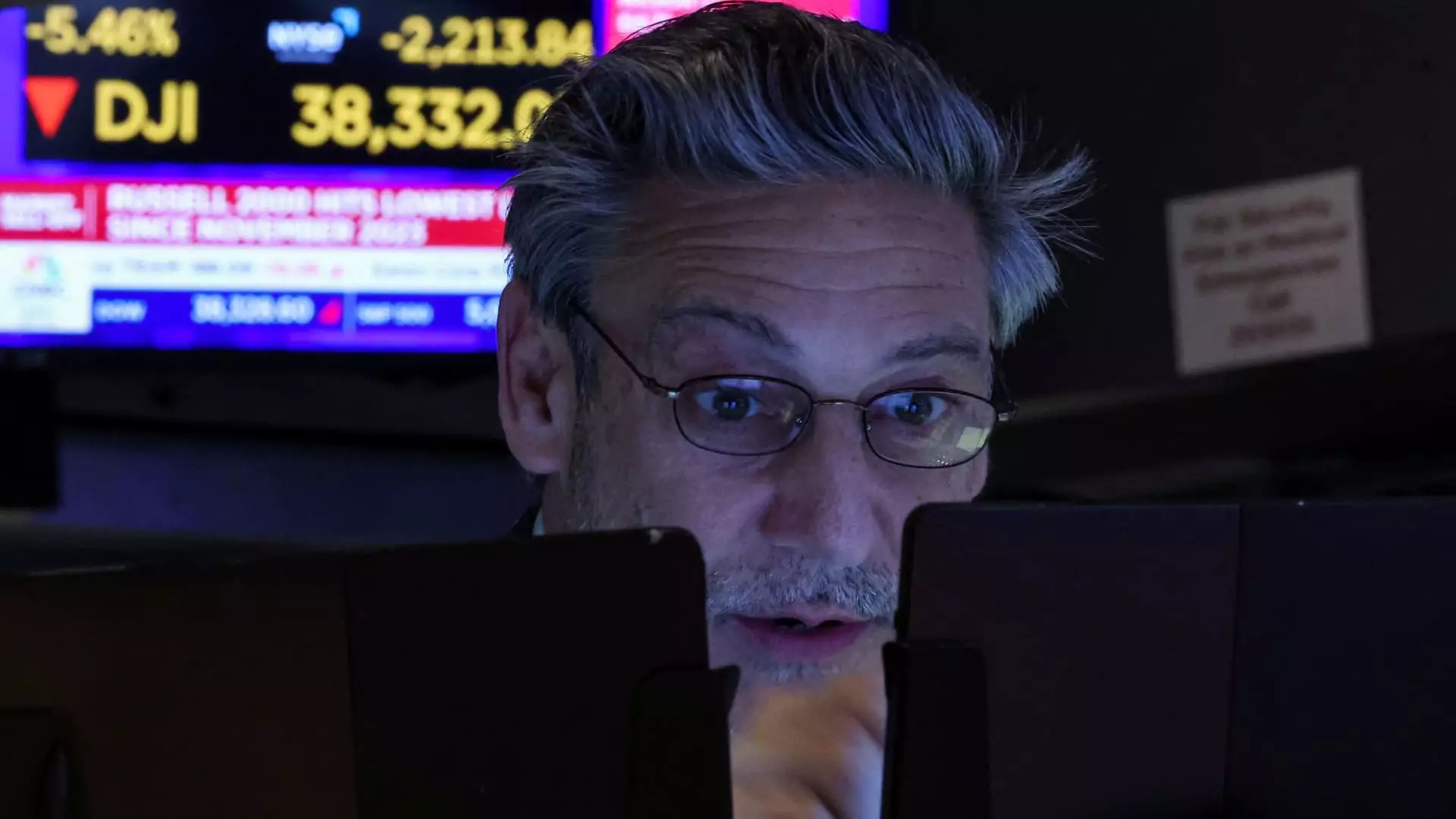The world of finance has always been a precarious balancing act, akin to walking a tightrope. Recently, however, that rope seems to be fraying, with ominous signs flashing in the stock market. Rapid downtrends and dramatic declines in stock prices are not merely fluctuations; they are harbingers of deeper, rooted issues that deserve our attention. As traders brace for the possibility of market halts, driven not just by internal dynamics but influenced by external factors, one has to wonder: are we witnessing the brink of a market meltdown?
The historical context is chilling. We’ve seen trading halts thrown into effect during significant downturns, such as the turmoil surrounding the COVID-19 pandemic. However, the current volatility appears to be fueled largely by unforeseen global trade tensions and alarming tariffs that have triggered an unsettling climate for investors. The stark reality is that these situations create a cascading effect—a snowball that might very well generate an avalanche if not controlled quickly.
The Countdown to Catastrophe: Circuit Breakers Explained
Trading halts and circuit breakers are in place to mitigate losses and prevent panic-induced selling from spiraling out of control. However, while these mechanisms are useful, they represent merely a reactive approach to market conditions that often demand proactive measures. The U.S. stock exchanges employ three tiers of circuit breakers designed to halt trading based on specific thresholds of decline: 7%, 13%, and a staggering 20%. The fact that we have reached such measures in the past raises an alarm—especially with financial pundits warning that current economic conditions may lead us to activate such measures yet again.
What complicates matters further is the psychological aspect of trading. The fear of declines can create a chain reaction; one small dip may send investors scrambling to sell, reaching the preordained thresholds faster than anticipated. The recent figures are not just numbers; they illustrate a broader economic sentiment sleeping uneasily, pondering whether these declines are merely a temporary blip or the beginning of a more significant downturn.
A Cautionary Tale: The Market’s Recent Behavior
Let’s delve into recent figures that exemplify the market’s precarious condition. After closing at a relatively stable 5,074.08, the S&P 500 faced a rapid decline that sent shockwaves through the financial community. The loss of nearly 6% in one day was reminiscent of darker times, leaving the index dangerously close to the circuit breaker thresholds at 4,718.89 and 4,414.45. The Dow Jones Industrial Average witnessed a staggering 6.9% plunge, its most significant single-day loss since June 2020, while the Nasdaq Composite unmistakably slipped into bear territory—down over 20% from its zenith.
In times of uncertainty, it’s vital for investors to discern a “flee or fight” mentality. Unfortunately, the historical patterns of market behavior suggest that fear predominates in such crises. On the precipice of significant losses, it’s understandable that traders react drastically rather than strategically, solidifying the notion that while circuit breakers are designed to save us from ourselves, they also expose our vulnerabilities.
The Political Climate and Its Impact on Market Stability
Equally critical in this discussion is the role of the political landscape. Decisions made at the governmental level have far-reaching ramifications in the financial market, and the recent imposition of tariffs—unilaterally motivated by previous administrations—has created an undercurrent of tension that weighs heavily on investors’ minds. When political decisions instigate fear and uncertainty, those shocks ripple throughout the economy, causing real-time reactions that not only impact stock prices but also stifle consumer confidence.
Many individuals are rightly questioning the balance of power and the reach of politics into the economic sphere. In a center-left political space, there lies an intrinsic belief in the need for a stable and cooperative approach that transcends partisan divides. If policy continues to be dictated by reactive impulses rather than rational discourse, we face the ever-looming prospect of economic repercussions that could dwarf our past crises.
The cyclical nature of the financial market teaches us that volatility is always around the corner, but awareness and deliberate action can provide tools of resilience. Understanding the mechanisms at play and advocating for responsible, consensus-driven policies is essential if we are to avoid a crash with ramifications far beyond the stock market itself.

